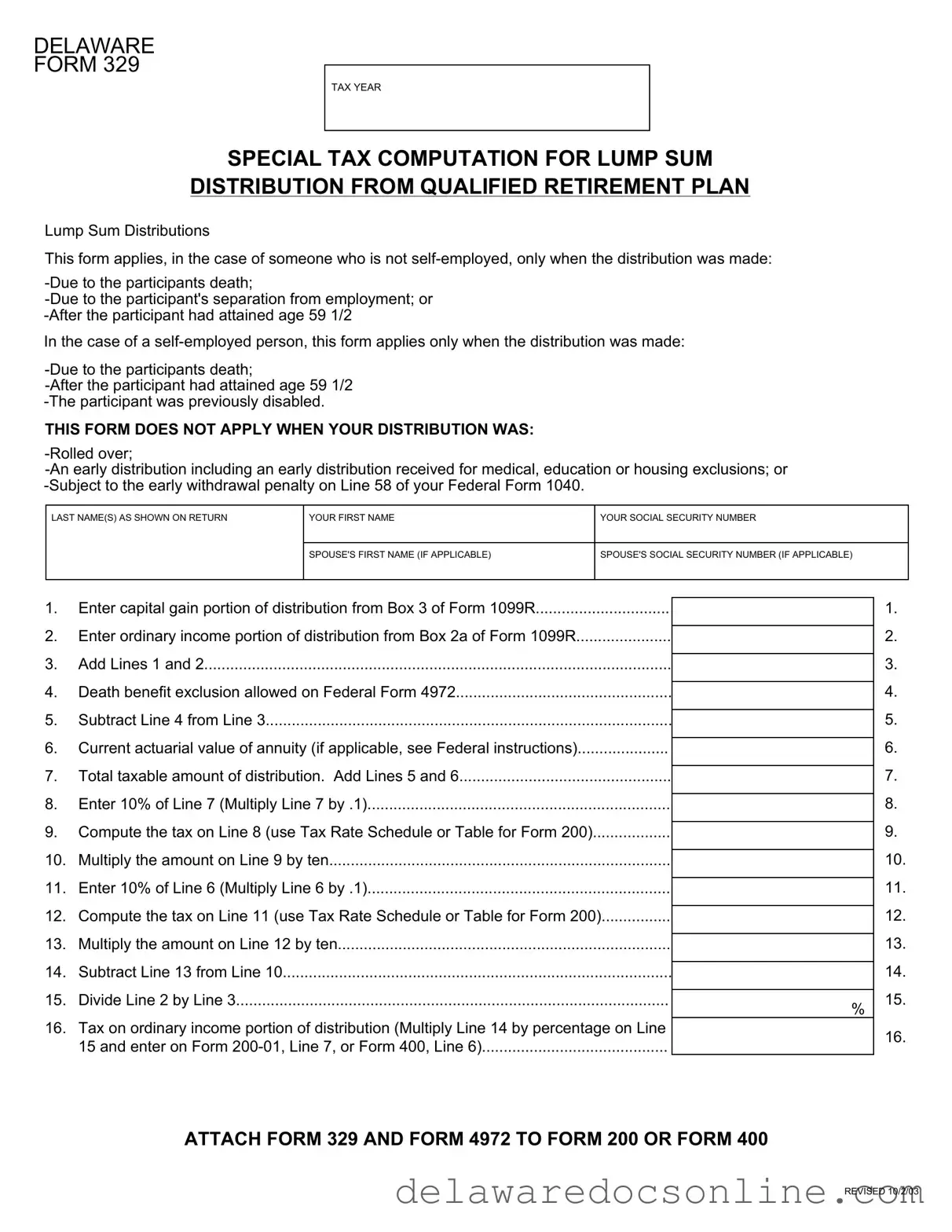1.Enter capital gain portion of distribution from Box 3 of Form 1099R...............................
2.Enter ordinary income portion of distribution from Box 2a of Form 1099R......................
3.Add Lines 1 and 2............................................................................................................
4.Death benefit exclusion allowed on Federal Form 4972..................................................
5.Subtract Line 4 from Line 3..............................................................................................
6.Current actuarial value of annuity (if applicable, see Federal instructions).....................
7.Total taxable amount of distribution. Add Lines 5 and 6.................................................
8.Enter 10% of Line 7 (Multiply Line 7 by .1)......................................................................
9.Compute the tax on Line 8 (use Tax Rate Schedule or Table for Form 200)..................
10.Multiply the amount on Line 9 by ten...............................................................................
11.Enter 10% of Line 6 (Multiply Line 6 by .1)......................................................................
12.Compute the tax on Line 11 (use Tax Rate Schedule or Table for Form 200)................
13.Multiply the amount on Line 12 by ten.............................................................................
14.Subtract Line 13 from Line 10..........................................................................................
15.Divide Line 2 by Line 3....................................................................................................
16.Tax on ordinary income portion of distribution (Multiply Line 14 by percentage on Line 15 and enter on Form 200-01, Line 7, or Form 400, Line 6)...........................................

